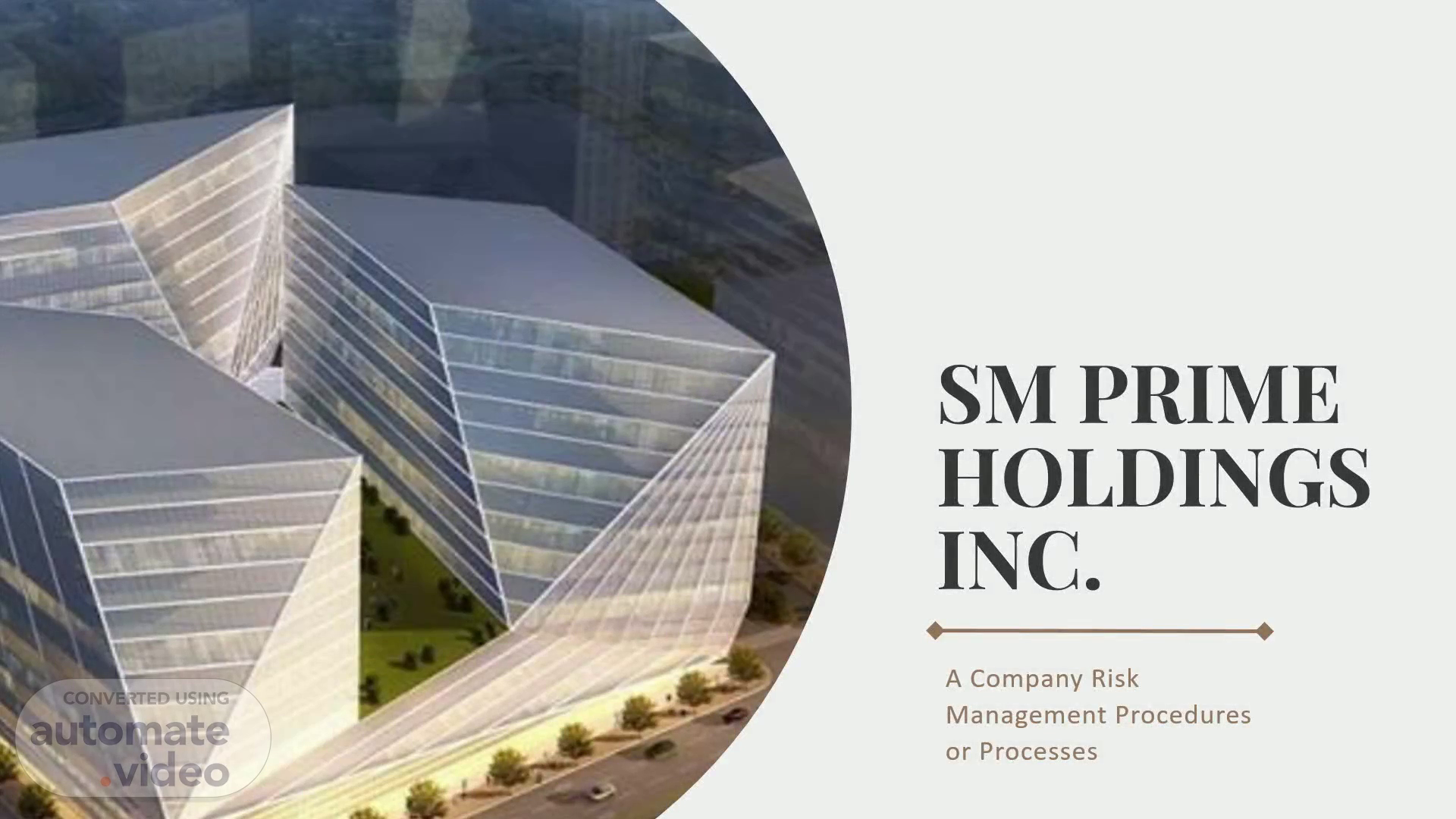Scene 1 (0s)
SM PRIME HOLDINGS INC.. A Company Risk Management Procedures or Processes.
Scene 2 (11s)
BACKGROUND OF THE COMPANY. One of the largest integrated property developers in Southeast Asia..
Scene 3 (48s)
Incorporated in the Philippines in 1994. They started as a mall developer and operator and grew to be the biggest retail shopping center developer and operator in the Philippines..
Scene 4 (1m 24s)
Residential business component that sells affordable condominium units..
Scene 5 (2m 6s)
RISK MANAGEMENT APPROACH. RISK EXPOSURE RISK ASSESSMENT RISK MANAGEMENT AND CONTROL.
Scene 6 (2m 23s)
Safety and Security Risk. RISK EXPOSURE. RISK ASSESSMENT.
Scene 7 (2m 52s)
Property Damage and Business Disruption Risk. Implementation of data back-up procedures to ensure availability of critical resources. The Malls are subject to BCMS internal audit. The disaster recovery programs, and disaster resilience in the design of its buildings are also in place..
Scene 8 (3m 26s)
Information Security And Information Technology. Annually conducts Information Security Awareness and Cyber Security Risk Management training. Implemented SIEM–this enables the Company to respond to cyber security threats faster. Implemented Endpoint Detection and Response. Website vulnerability scanning is regularly performed..
Scene 9 (4m 9s)
Environmental Risk. RISK ASSESSMENT. RISK MANAGEMENT AND CONTROL.
Scene 10 (4m 53s)
Economic Risk. Financial reporting analysis, industries and market research.
Scene 11 (5m 23s)
Customer satisfaction surveys, social media communications, demographic analysis.
Scene 12 (6m 4s)
Operational/ Process Risk. Business process review.
Scene 13 (6m 20s)
Financial Risk. Interest rate risk: To manage its interest cost using a mix of fixed and floating rate debts in a cost-efficient manner, it enters into interest rate swaps. Foreign currency risk: The Company enters into foreign currency swap contracts, cross currency swaps, foreign currency call options, non-deliverable forwards and foreign currency range options Liquidity Risk: The Company intends to use internally generated funds and proceeds from debt and equity issues. Credit risk: The Company trades only with recognized, creditworthy related and third parties. Equity Price risk: Management monitors the equity securities in its investment portfolio based on market expectations. Capital Management risk: The Company manages its capital structure and may adjust the dividend payment.
Scene 14 (7m 57s)
Regulatory Compliance Risk. Compliance monitoring and reporting.
Scene 15 (8m 33s)
Submitted by: Boado, Rechelle Ann Jangolan, Cyril Laigo, Rashenee Jehan Tolding, Frencis Apol Submitted to: Mr. Erwin L. Medina Teacher.
